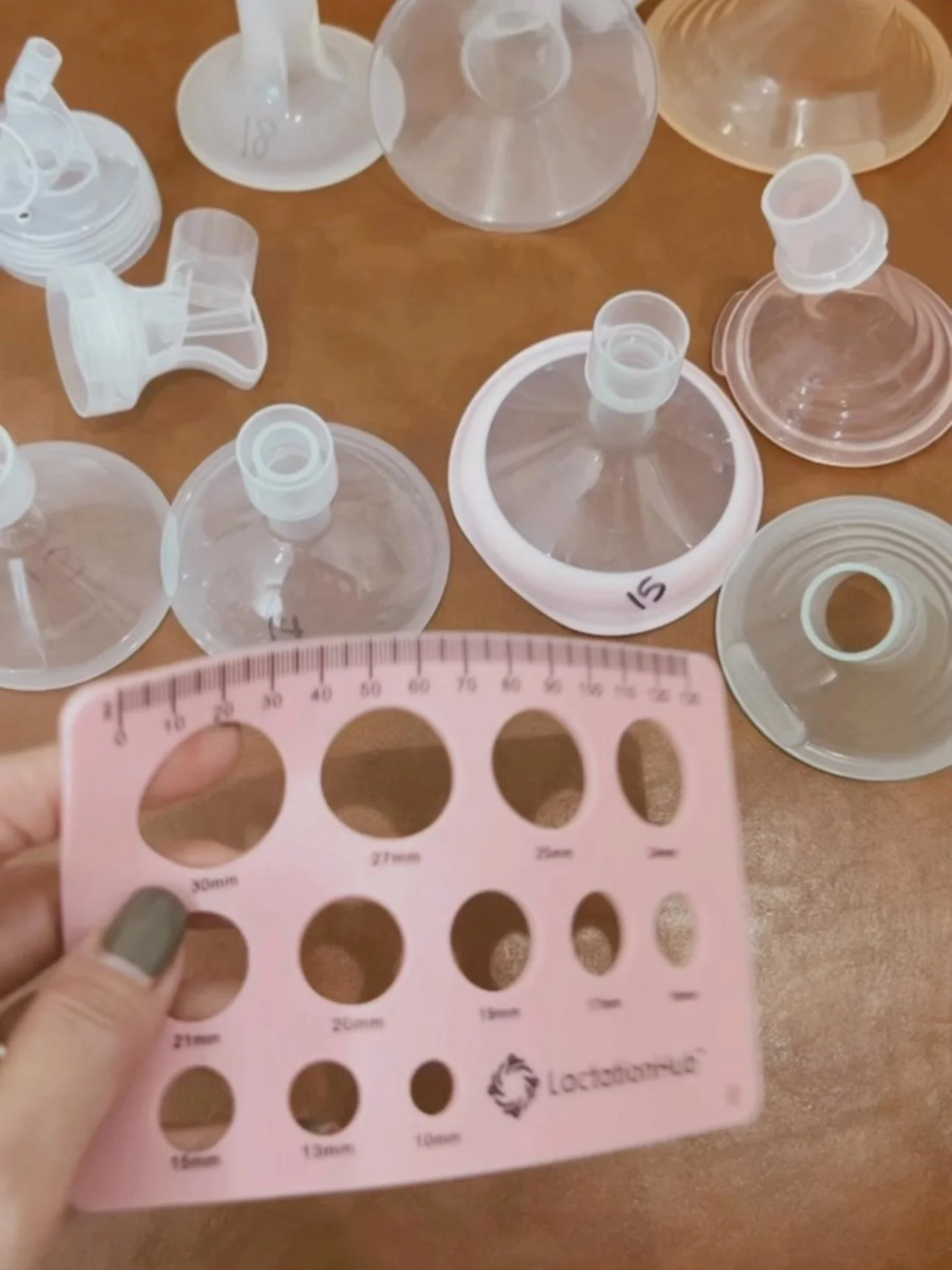The Truth About Flange Fit: Why Smaller Is (Usually) Better
When I had my own babies—over 20 years ago now—we just used whatever flange came with the pump. No one talked about flange sizing. There were no alternate sizes to choose from, no guides, and certainly no personalized fittings. You got a 24 mm or 27 mm, and that was that. It’s almost laughable now, given what we know, but at the time, that was the standard.
And where did that standard come from? There’s some speculation in the lactation world that the original sizing was modeled after dairy cow measurements from the milk industry. While there’s no confirmed evidence of that, let’s just say... it wouldn’t surprise me. For years, human milk expression tools weren’t really designed with the actual anatomy—or comfort—of human moms in mind.
The Old Way of Thinking
When I became an IBCLC in 2012, flange sizing still wasn’t a widely discussed issue. We didn’t have access to small flange sizes. The general belief was that nipples should never touch the inside of the flange—so if a mom was experiencing pain or discomfort, we were trained to size up.
The result? Moms were often pumping with flanges that were way too large, leading to nipple swelling, poor milk output, and a whole lot of unnecessary discomfort.
It wasn’t until about 2016 that we started to see conversations shift. Around that time, a few off-brand companies began offering smaller flange sizes, and lactation consultants—myself included—started experimenting. The results were immediate and eye-opening: bigger wasn’t better. For many parents, going smaller drastically improved milk output and reduced pain.
A New Era in Flange Fitting
Fast forward to today, and we’re in a whole new world of pumping support. In 2024, IBCLC Jeanette Mesite Frem released the very first validated flange sizing tool—a massive milestone in the lactation field. Jeanette had already been teaching her method to fellow professionals, and many of us were using it long before it became widely recognized. But now, there’s a framework to support what we’ve been seeing for years: individualized flange fitting matters.
Jeanette’s Flange FITS™ method focuses on measuring the nipple tip and trialing a few sizes to find what actually works—rather than defaulting to a one-size-fits-most model. It’s not just about measurements; it’s about what feels good and what gets milk out efficiently.
With this approach, I rarely see anyone who fits a 24 mm flange. Most of the clients I work with—just like IBCLCs around the globe—fall somewhere between 15 mm and 17 mm. Yes, really. And that includes first-time moms, exclusive pumpers, NICU mamas, and everyone in between.
What We Know Now
Today, we understand that the nipple can touch the inside of the flange—as long as it glides comfortably and isn’t being pulled or stretched unnaturally. Measurement is a starting point, but it’s not the whole story. Comfort and milk output are the ultimate indicators of a good fit.
It’s also important to know that flange size can change—sometimes dramatically—throughout your pumping or breastfeeding journey. I often recommend waiting to finalize flange sizing until about four weeks postpartum, because breast tissue and nipple elasticity can shift significantly in that time. And yes, it might even change again as your supply regulates, your baby grows, or your pumping needs evolve.
So What Should You Do?
If pumping hurts, if your output is lower than expected, or if your nipples look swollen or misshapen after a session—your flange size might be the issue. And even if it doesn’t hurt, you might still benefit from a smaller size.
A proper flange fit can be the difference between pumping being tolerable and pumping being empowering. It can protect your supply, reduce nipple trauma, and give you back some control over your feeding experience.
💛 Not sure where to start? I offer both in-person and virtual flange fit consults, and we can walk through your measurements, comfort, and milk output together.
👉 Click here to schedule a consult
You don’t have to figure this out alone—and you definitely don’t have to settle for the size that came in the box. 💛

